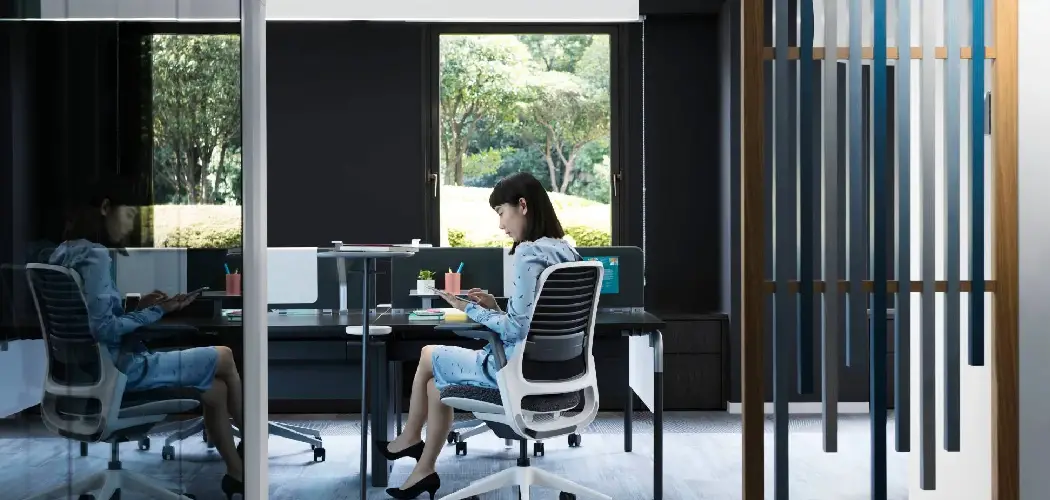Do you ever wonder how much office space your business truly needs? Knowing the total square footage of your office or workspace helps you plan for future growth, understand where you are now, and make efficient use of the space that you have. Accurately measuring office square footage sounds intimidating, but with these simple steps, it can be done quickly and easily!
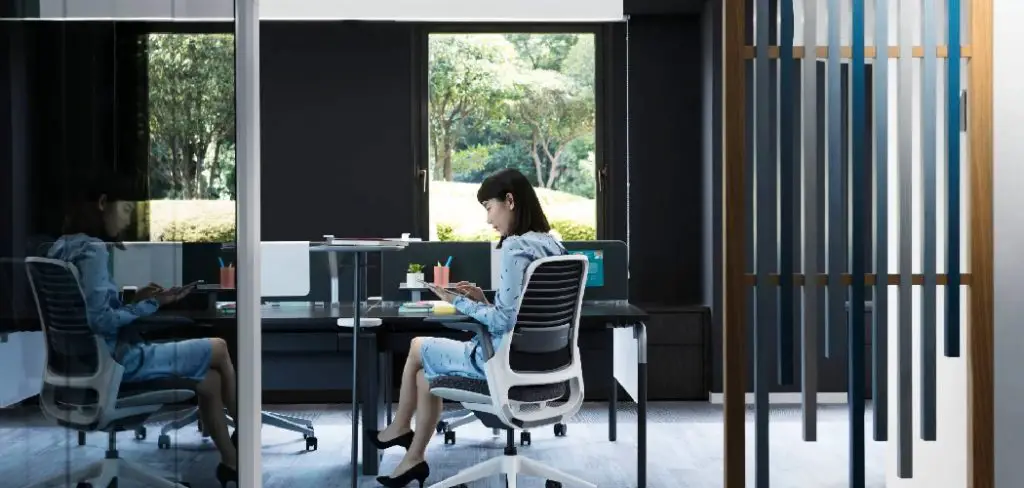
In this blog post, we’ll give an overview of how to measure office space square footage including the tools needed, measurements required, and other helpful tips and tricks. Read on to learn more about making sure you’re getting the most out of every inch in your workplace!
Tools and Materials You Will Need to Measure Office Space Square Footage
- Measuring tape
- Pencil and paper
- Calculator (optional)
Step-by-Step Guidelines on How to Measure Office Space Square Footage
Step 1: Start by Measuring the Length:
Begin your measurements by recording the length of each wall in feet and inches. If you have an area with out-of-square walls, measure both the longest and shortest lengths for accuracy. Measuring each wall separately will ensure that you’re getting an accurate reading. Use your measuring tape to measure along the baseboards and make sure to include any alcoves or doorways in your measurements.
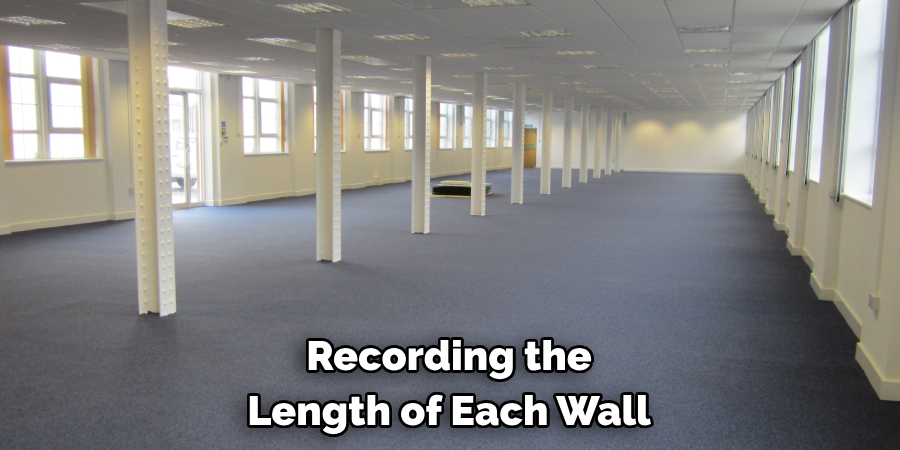
Step 2: Measure the Width:
Next, measure the width of each wall in feet and inches. Again, if you have an area with out-of-square walls be sure to take both the longest and shortest measurements. Don’t forget to include any alcoves or doorways in your calculations as well. While measuring, consider any protrusions like windows or columns that will need to be calculated separately.
Step 3: Calculate the Total Square Feet:
Now that you’ve measured the length and width of each wall, it’s time to calculate the total square feet. To do this, simply multiply the length of each wall by its width. Add up all of your measurements for a total! If you don’t feel comfortable doing the math on your own, feel free to use a calculator.
Step 4: Make Adjustments for Any Protrusions or Alcoves:
Once you’ve calculated the total square footage of your office space, make any adjustments necessary for protrusions like windows and columns as well as alcoves or doorways. Add up any additional measurements in feet and inches to get a more accurate total of the office space square footage.
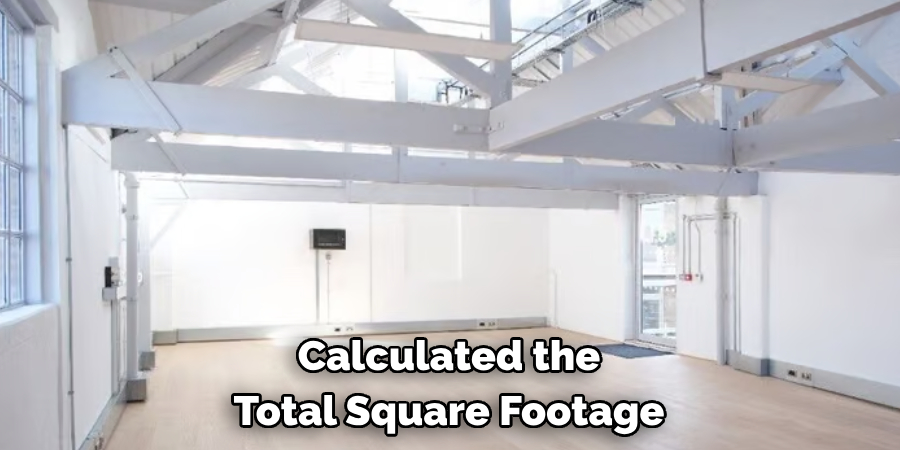
Following these steps will help you measure the square footage of your office space accurately and efficiently. Knowing the total square footage of your workspace can be invaluable for planning, budgeting, and efficiently arranging furniture.
With this knowledge, you’ll have a better understanding of how to make the most out of every inch of your office space!
Additional Tips and Tricks to Measure Office Space Square Footage
1. Take into account larger and unusually shaped spaces. Larger spaces such as conference rooms or lobbies, for example, must be measured differently than smaller office spaces. Additionally, irregularly shaped spaces require more careful measurements in order to accurately calculate the total square footage.
2. Use a laser measuring tool for accuracy and precision when taking measurements of multiple rooms. Laser measuring tools are designed to measure the length, width, and height of a space quickly and accurately. This is especially helpful when measuring multiple pieces of furniture or other objects in order to calculate total square footage.
3. Consider using digital floor plans for mapping out office spaces. Digital floor plans are an easy way to map out your office space so you can see exactly how much total square footage you have. Digital floor plans also allow you to easily make changes and adjustments as needed.
4. Don’t forget to take measurements of common areas such as waiting rooms or reception desks when calculating office space square footage. In order to get an accurate calculation, it is important to include these types of spaces when measuring the total square footage.
5. Make sure to take into account storage areas and closets when measuring office space square footage. Closets, file cabinets, and other types of storage can take up significant amounts of space in an office and should be included in the total calculation.
6. Don’t forget about outdoor areas such as patios or decks when calculating office space square footage. Outdoor areas may not be included in the total calculation of space, so it is important to take measurements of these areas as well.
By following these tips and tricks, you can ensure you get an accurate calculation of the total office space square footage. This will help you when budgeting for office space, planning out furniture layouts, or creating digital floor plans. With careful measuring and attention to detail, you can easily calculate the total square footage of your office space.
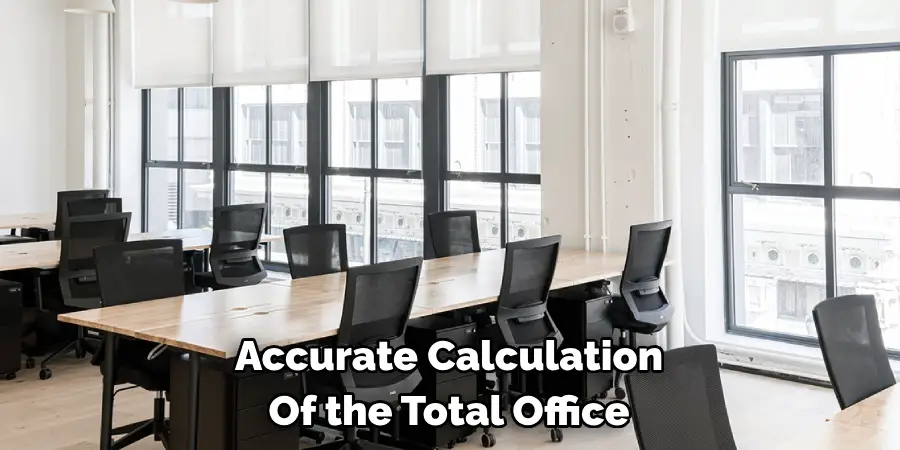
Things You Should Consider to Measure Office Space Square Footage
1. Measure the Entire Area of the Office:
When measuring the square footage of an office, it is important to consider not just the main work areas but also any additional space that may be included, such as closets, hallways, bathrooms, storage areas, and other less-trafficked corners.
If you don’t measure these areas accurately then you may find yourself underestimating the total space. To ensure accuracy when measuring an office, measure from one side of a wall to the other, and then continue around the perimeter until you have traversed every corner of the office.
2. Consider All Dimensions:
When measuring an office for square footage, it is important to consider more than just height and width. Take into account the depth of each room, and make sure to measure any alcoves or other hidden spaces. Measure all doorways, closets, windows, and columns as well. This will help ensure that you have an accurate measurement when calculating the total square footage of the office space.
3. Be Aware of Any Exclusions:
Some office buildings may have certain areas or features that are excluded from the total square footage measurement. Be sure to check with your landlord or leasing agent before measuring for any exclusions that may apply. This could include anything from an outdoor patio area to a common shared space, and make sure you take these into account when calculating the square footage of the office space.
4. Account for Common Spaces:
Many office buildings have common spaces, such as lobbies or conference rooms, that are shared by all tenants. These areas should be included in the total square footage measurement, as they will contribute to the overall space of your office. Make sure to account for any common spaces in your measurements so you can get an accurate estimate of the square footage of the entire office.
5. Use an Online Calculator:
To make sure you get the most accurate square footage measurement for your office space, consider using an online calculator to help you with the calculations. These calculators are designed to provide a quick and easy way to calculate the total area of any room or building. This will give you a precise measurement, saving you time and effort in the measuring process.
By following these considerations, you can ensure that your measurements are accurate and that you get the most square footage out of your office space. Doing so will help you make informed decisions when it comes to leasing or renting an office space for yourself or your business.
Frequently Asked Questions
What is the Best Way to Measure Office Square Footage?
To measure office space square footage accurately, start with measuring the exterior walls of a building or room. Then, determine which measurements should be included and excluded from your final calculation. Exclude any non-habitable spaces like hallways, stairwells, closets, bathrooms, etc.
Include any interior walls that are part of the office space, such as those dividing offices or conference rooms. It is important to note that there can be discrepancies in square footage calculations when working with irregularly shaped spaces, so take extra care in these measurements and consider using an experienced professional for accuracy.
What Factors Should I Consider When Measuring Office Space Square Footage?
When measuring office space square footage, there are several factors to consider. First and foremost, pay close attention to the shape of the office space. Are there any interior walls or uneven shapes that must be taken into account?
Additionally, make sure to exclude any non-habitable spaces like hallways, stairwells, closets, bathrooms, etc., as these should not be included in the final square footage calculation. Finally, consider any windows or doors and make sure to take their measurements into account when calculating the total area.
Are There Any Benefits to Measuring Office Space Square Footage?
Yes. Accurately measuring office space square footage can provide a wealth of information, such as how much space is being used, the amount of usable floor area, and whether or not furniture and equipment are taking up too much space.
This knowledge can be immensely helpful when making important decisions about space allocation, office remodeling, selecting furniture and equipment, and more. Additionally, having an accurate square footage measurement can help with renting or leasing office spaces as well as understanding zoning regulations.

Conclusion
All in all, knowing how to measure office space square footage is an important skill that can provide a wealth of information for those looking to make decisions about their office space.
With the right approach and understanding of factors, such as the shape of the office space, excluded non-habitable spaces, and windows/doors, you can ensure accuracy in your calculations.
The final result will be immensely helpful when it comes to renting or leasing office spaces, understanding zoning regulations, and making important decisions about space allocation.

